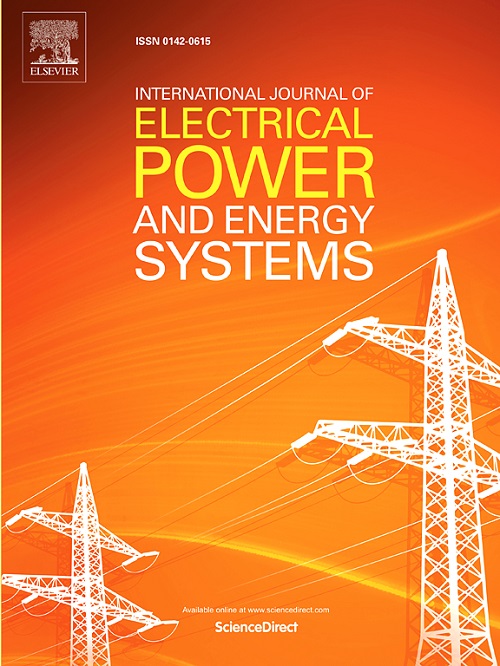Interpretable analysis of transformer winding vibration characteristics: SHAP and multi-classification feature optimization
IF 5
2区 工程技术
Q1 ENGINEERING, ELECTRICAL & ELECTRONIC
International Journal of Electrical Power & Energy Systems
Pub Date : 2025-03-11
DOI:10.1016/j.ijepes.2025.110585
引用次数: 0
Abstract
Current research on vibration-based winding looseness struggles to clearly determine the contribution of individual features to the model. This paper proposes using the distribution of the harmonic-to-fundamental frequency ratio as a feature for a 110 kV transformer and introduces the SHapley Additive exPlanations (SHAP) method to analyze feature contributions. However, since SHAP tends to overlook the recall of certain states in multi-classification problems, a feature subset optimization scheme is proposed. After conducting cross-validation with multiple classifiers and analyzing the impact of combined features, SHAP analysis is performed on the constructed features to generate a key feature union set. Once thresholds for overall accuracy and sub-state recall are set, features are sequentially removed from the union set while their compliance with the predefined thresholds is evaluated, thereby determining their retention. Experimental results show that the proposed method achieves 99.73 % accuracy in identifying winding looseness states, improving by 0.03 % compared to SHAP, while enhancing the recall of the severe fault state A3 by 0.26 %. Overall, the proposed method effectively balances accuracy and key state recall, offering a new perspective on feature analysis in fault diagnosis.
求助全文
约1分钟内获得全文
求助全文
来源期刊
CiteScore
12.10
自引率
17.30%
发文量
1022
审稿时长
51 days
期刊介绍:
The journal covers theoretical developments in electrical power and energy systems and their applications. The coverage embraces: generation and network planning; reliability; long and short term operation; expert systems; neural networks; object oriented systems; system control centres; database and information systems; stock and parameter estimation; system security and adequacy; network theory, modelling and computation; small and large system dynamics; dynamic model identification; on-line control including load and switching control; protection; distribution systems; energy economics; impact of non-conventional systems; and man-machine interfaces.
As well as original research papers, the journal publishes short contributions, book reviews and conference reports. All papers are peer-reviewed by at least two referees.

 求助内容:
求助内容: 应助结果提醒方式:
应助结果提醒方式:


